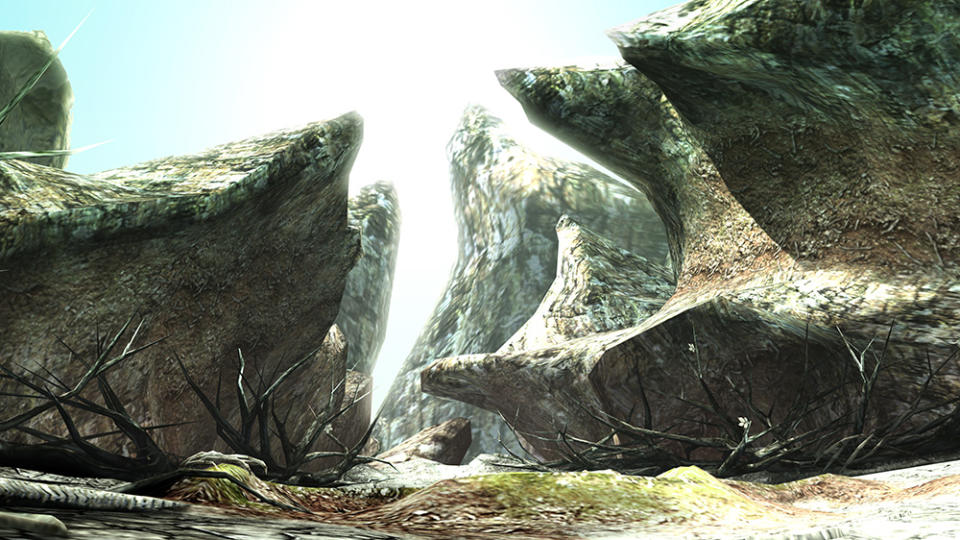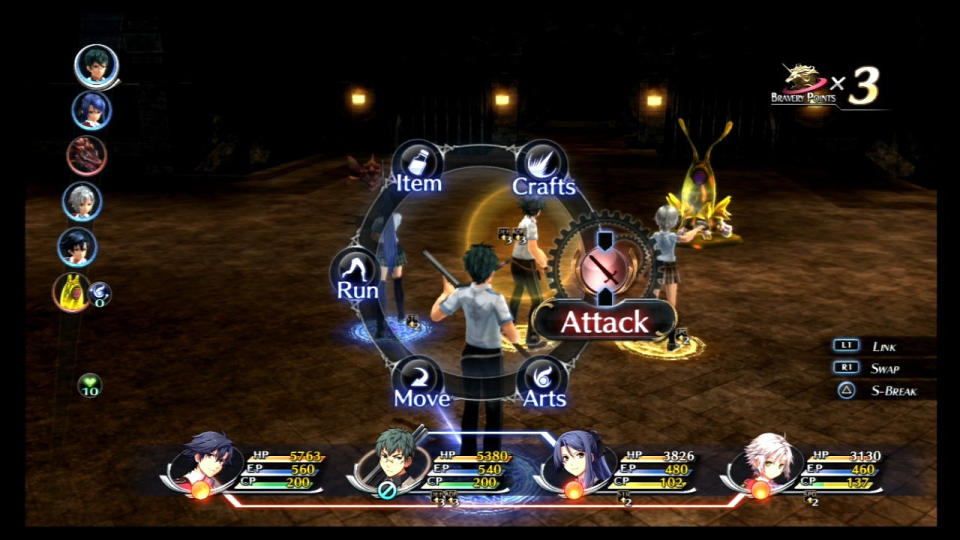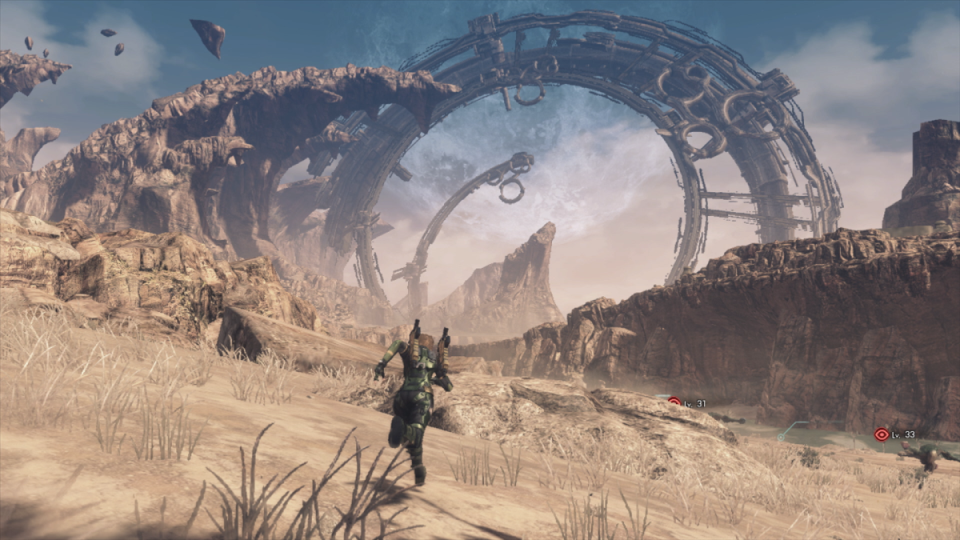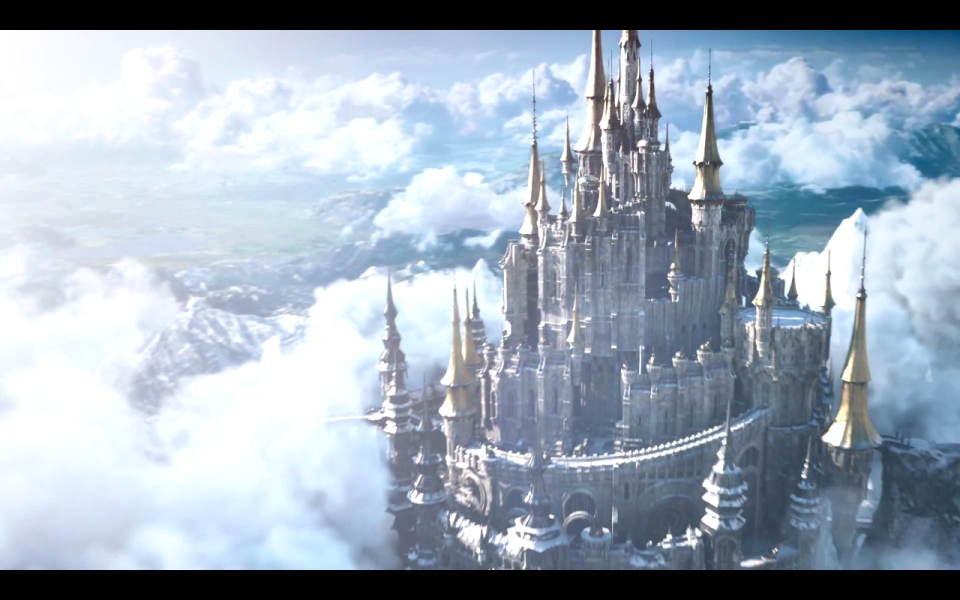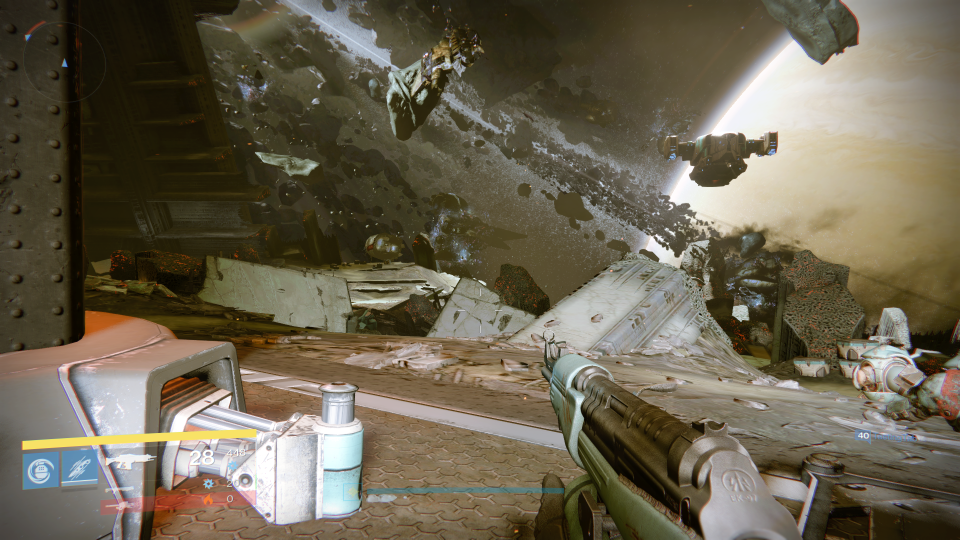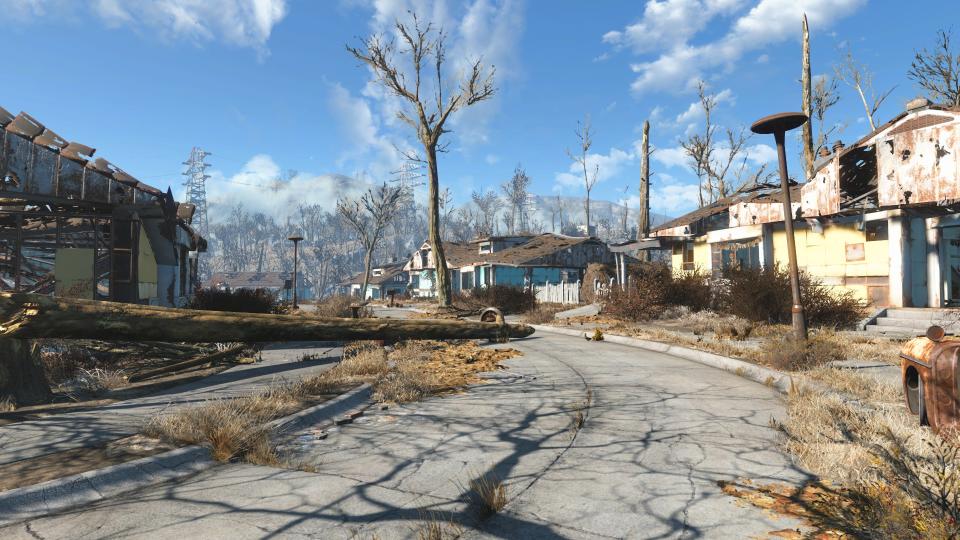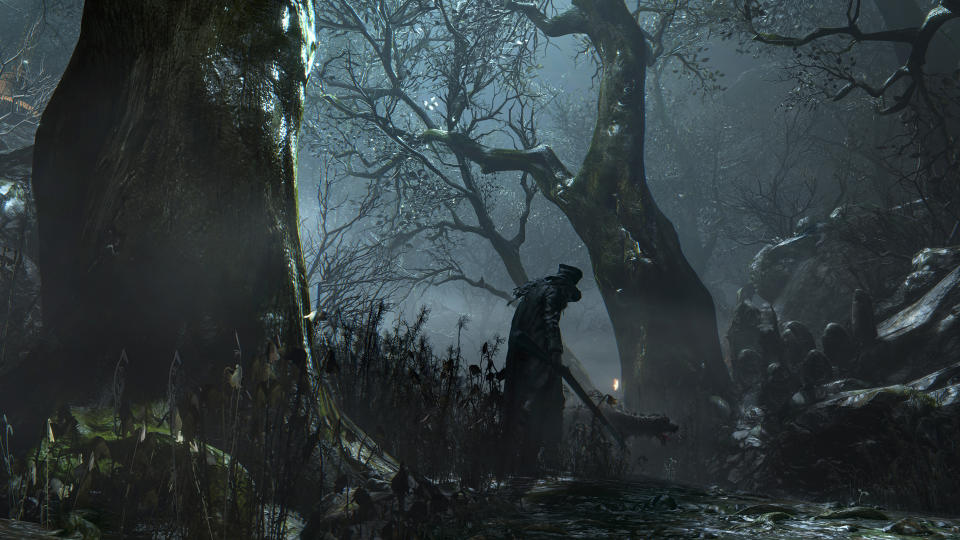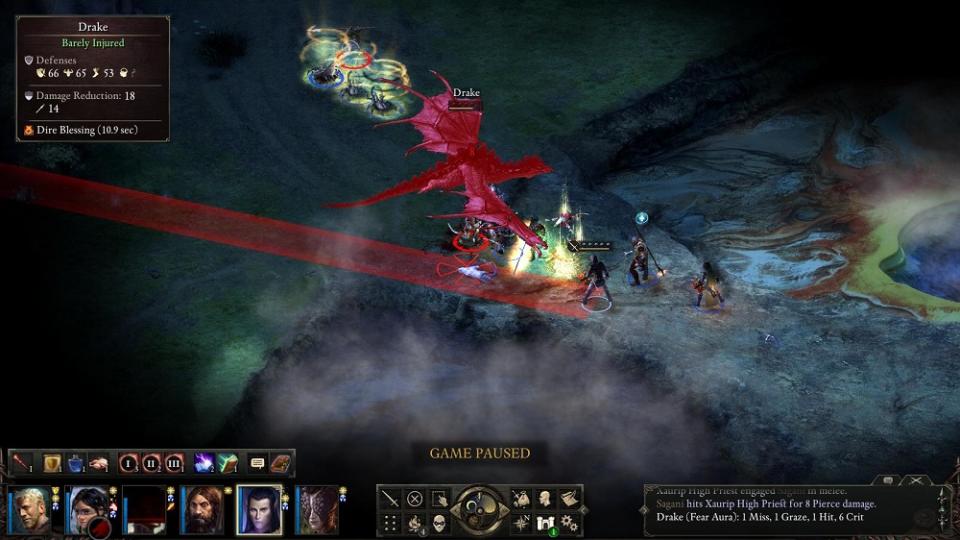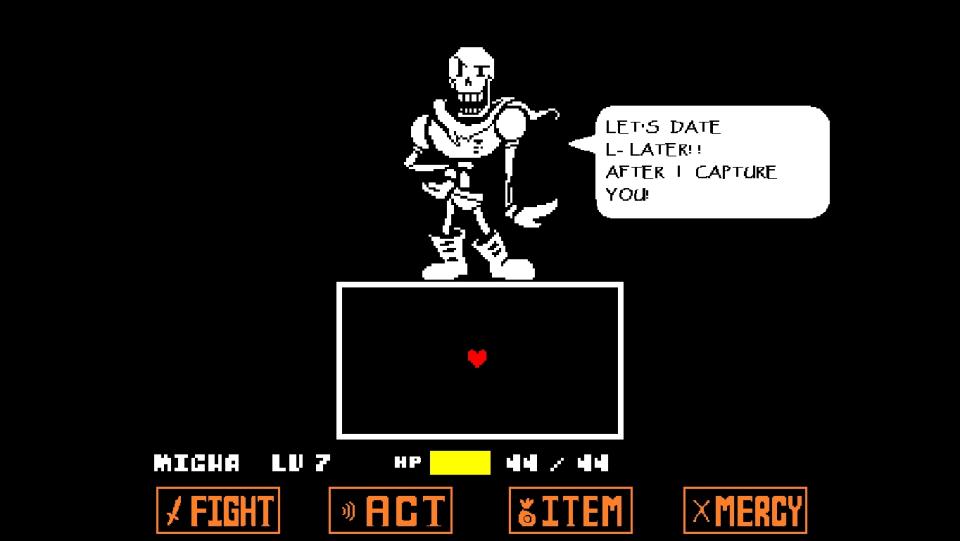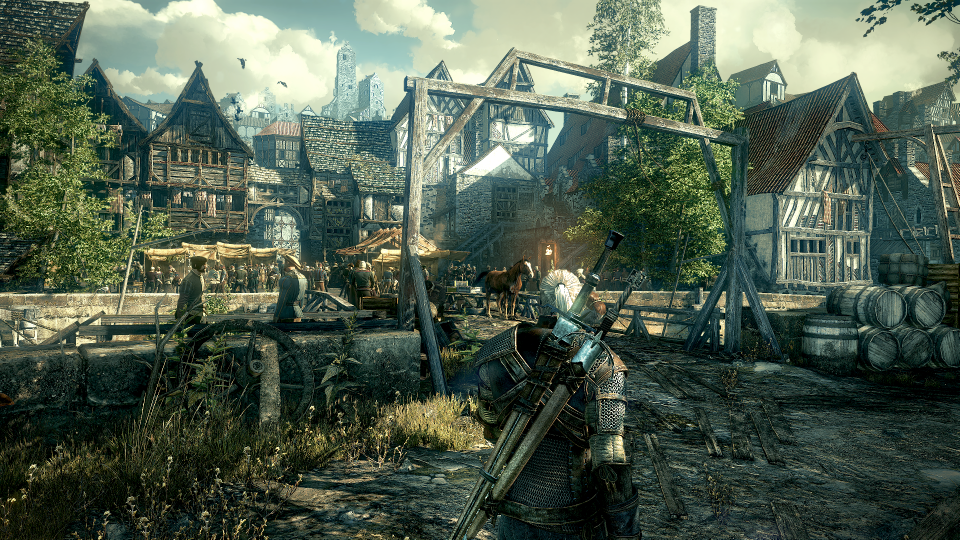The 10 best RPGs of 2015: The Witcher 3, Xenoblade Chronicles X, Pillars of Eternity, and more
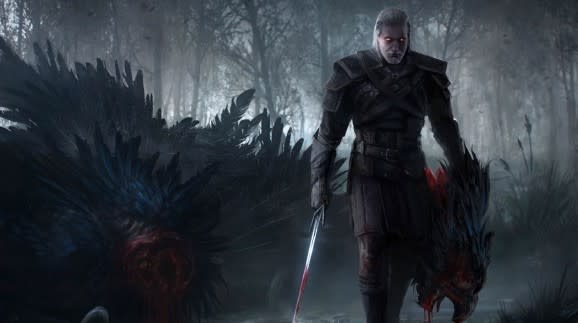
FEATURE:
In 2015, role-playing games spread out in all directions. They went bigger and smaller. Some looked to the past for inspiration while others aimed to push the genre forward. We even saw stellar efforts from all budgetary levels, from triple-A fare like Fallout 4 to indie surprises like Undertale. 2015 truly had something for everyone.
No matter which direction your tastes run, these 10 games probably overlap with them somewhere. With such a diverse lineup of games, 2015 proved that the RPG is here to stay.
10. Monster Hunter 4 Ultimate
Above: Monster Hunter 4 Ultimate’s lush vistas are almost as much of a reason to play the game as the hunting itself.
Image Credit: Capcom
Platform: 3DS
It’s hard to pin down what Monster Hunter is, especially since it can vary wildly depending on who you ask. Either it’s an amazingly addictive game of taking down humongous monsters as a team and making better weapons with their parts, or it’s a user-unfriendly, hand-crampingly awkward slog with little pushing you forward except more grind.
Why can’t it be both?
Yes, trying to control with one nub is a pain when you have to move both your character and the camera around — unless you’re one of the lucky few with the special second nub attachment. And it’s definitely true that the combat feels a lot more sluggish than in other, similar games.
But to the gamers that Monster Hunter got its hooks into, none of that matters. They’re more than willing to put up with the quirks to explore a vast wilderness and discover strange, humongous local fauna. The awkward, slow controls go down smoother when you’re mastering one of a multitude of different kinds of weapons, taking true ownership of your skill as you get better at wielding them. And setting aside how most of the monsters you hunt are huge damage sponges is easy when you’re chipping away at them with your friends.
Nothing’s particularly revolutionary about Monster Hunter 4 Ultimate. It’s got the same charms and the same annoyances that the series always had, just with more refinements, environments, and creatures to take down. But it still remains as singular an experience as it’s always been.
Besides, the best hunters are always looking for their next quarry.
9. The Legend of Heroes series
Above: If you’re looking for some good old-fashioned JRPGing, you’ve come to the right place.
Image Credit: playstation.com
Platforms: PlayStation 3, PC, PSP (Trails in the Sky SC); PlayStation 4, PS Vita, PC (Trails of Cold Steel)
Sometimes you don’t need to do anything fancy to be excellent. Sometimes you find new depths of quality in the familiar.
So it is with the long-running The Legend of Heroes series from Nihon Falcom, a stalwart institution that aims to quietly take what’s good about Japanese-RPGs and refine it. Battles and leveling are immediately familiar, taking the best bits of Final Fantasy X, Final Fantasy VII, and the Lunar series and synthesizing them into an accessible, breezy form that avoids the traps that JRPGs usually fall into.
Dodging the pitfalls of tired JRPG conventions is what the series does best, as you can see from the Trails in the Sky trilogy, the second entry of which was just released last month. The more embarrassing aspects of the genre, like the oversexualization of female characters and nonsensical deus ex machina, are toned down in favor of a charming story with a dash of political intrigue. Indeed, it feels like Falcom looked to tap into a more hopeful, optimistic vibe without stooping to more cynical ploys for attention.
And Trails of Cold Steel, the start of a new trilogy in The Legend of Heroes series, continues that trend while evolving to feel more modern than ever. Instead of a sprite-based, PS1-era graphical style, the game is now in full 3D with beautifully colorful visuals. But more significant is the addition of a healthy injection of Persona DNA. The game takes place at a school, where you can get to know your classmates, take part in clubs, and do odd jobs for people as the year goes by. Deepening your relationship with fellow party members allows you to do combo attacks with them. It’s sort of a shameless lifting of design sensibilities, but no one should be complaining when it works so well to prop up an already rock-solid formula.
8. Xenoblade Chronicles X
Above: In Xenoblade Chronicles X, scale is everything.
Platform: Wii U
Xenoblade Chronicles is a mess of a game. The combat makes itself more convoluted than it has to be, equipment tends to have too many stats and mechanics to weigh at once, and it even gives you the requisite JRPG annoying mascot character to contend with. In short, it’s the entire history of JRPG excess stuffed into one game.
And that’s exactly why it’s so phenomenal.
Right away, you’re thrown into a vast world that would make even Bethesda RPGs look small, one where you’re immediately greeted with a deluge of side missions, class-based leveling, and a giant playground full of dinosaur-like monsters to explore. And it’s not long after that you realize there are three other areas after this huge open area, all with unique environments and creatures.
But the greatest thrill you get from Xenoblade Chronicles X comes from it just letting you do things because they’re there. See a huge mountain in the distance? Go climb it. Notice an impossibly large dinosaur drinking from a pond? Just try to take it down. And those myriad side missions you’re presented with? Go ahead and sample here and there, picking out the most appealing ones to tackle full-force.
Xenoblade Chronicles X wants you to bathe in its bloated, sloppy glory and engulf yourself in its beautiful, dense world. It’s a heck of a thing to lose yourself in.
7. Final Fantasy XIV: Heavensward
Above: Heavensward shows off why Final Fantasy XIV is the best looking MMO on the market.
Image Credit: Gameskinny
Platforms: PlayStation 4, PlayStation 3, PC, Mac
Sometimes, the name says it all.
Heavensward proves to be an extremely generous expansion to Final Fantasy XIV, featuring new classes, encounters, and areas that will keep you playing even longer. But that’s nothing new for massively multiplayer online game expansions. What’s special about Heavensward is the literal direction it takes the game in. Like the name suggests, Heavensward expands on Final Fantasy XIV not outward, but upward, adding floating island areas that show off just how pretty XIV is — not to mention honing the new story’s focus on the Dragonsong war, which really is at home in the skies.
More than anything, though, Heavensward is the definitive statement about the health of the once-failed Final Fantasy XIV. The relanched version, A Realm Reborn, literally destroyed the hollow old world and replaced it with a completely rethought version that took criticisms to heart.
Heavensward is packed with more content for the hardcore players who plowed through everything in the base game. That there are hardcore players to make these things for says a tremendous amount.
6. Destiny: The Taken King
Above: The Taken King redeems Destiny.
Image Credit: GamesBeat
Platform: Xbox One, Playstation 4
No one suspected that a monumental game like Destiny would be a monumental disappointment, but in the end, it turned out to be a big, beautiful, mechanically sound grind with only vague hints of story and uninteresting, empty levels. By the same token, no one expected that a disappointing game like Destiny would be redeemed to such a high degree.
Thanks to The Taken King, the uninteresting characters and horribly vague story are replaced with characters with personality and a clear narrative and goal. The voice acting was redone in places — most notably Peter Dinklage’s tepid performance — to inject some life in between the shooty bits.
And with The Taken King, it seems that Bungie remembered that gameplay variety is a good thing. Rather than simply giving you an area to shoot things in, The Taken King throws you new wrinkles based on the mission you’re taking on, such as poor lighting and more variable objectives. And let’s not forget that the culmination of the expansion, the Oryx raid, is still the talk of the blogosphere.
The Taken King feels like a revelation not because it does something new but because it unlocks the potential that the languishing Destiny had all along.
5. Fallout 4
Above: Fallout 4 wants you to build as much as you destroy.
Image Credit: Jeffrey Grubb/GamesBeat
Platforms: PlayStation 4, Xbox One, PC
Who knew that all it took to make Fallout feel fresh again was to just add Minecraft?
If you look at the social media reaction following the release of Fallout 4, you’ll notice that the bulk of it wasn’t celebrating the cool environments or the thrill of shooting at different body parts individually using VATS to slow down time and call a shot. No, that’s all been done before. Now Fallout’s about rearranging furniture.
I’m being a little reductive, but Fallout 4’s new crafting and settlement-building system absolutely proves to be the key to the game’s success. By using different materials you find across the Commonwealth, you can build houses, furnishings, defense systems, and even shops in the settlement sites you can find, which will attract refugees looking for shelter and a new home. It even makes a certain fairly vestigial aspect of Bethesda’s open-world RPGs – the near-endless supply of useless junk you can lug around – into a vital gameplay mechanic by making them into materials for your crafting needs.
But for those who don’t find joy in meticulously setting up enough beds for everyone to sleep on, you’ve still got the same rock-solid open-world RPG formula Bethesda has been making and refining for years now. The Commonwealth is dense with wild quests and intriguing vignettes of life in the wasteland. The gunplay is as good as it’s ever been, and aiming with VATS still lends it an accessibility a mere shooter can’t boast. Most of all, Bethesda’s vision of atomic ’50s kitsch still remains striking.
That you get to have a hand in rebuilding the destroyed landscape makes all the difference.
4. Bloodborne
Above: Bloodborne adds a bit more horror to the Souls formula.
Image Credit: Sony Computer Entertainment America
Platform: Playstation 4
With Bloodborne, From Software made yet another game in the brutal Souls mold, but it’s the small difference that distinguish it and let it be something singularly great in its own right.
The most immediate difference is in its setting, which trades medieval trapping for Gothic horror, complete with mad peasants, werewolves, and tricorne hats. But most of all, the trademark foreboding of the Souls series is twisted into full-on horror thanks to the impeccable sound design and a creeping sense of doom and the unknowable as everything slowly spirals into a devilishly Lovecraftian tangle.
That Bloodborne succeeds in being scary is made all the more impressive by its eminent playability. Where the Souls games control somewhat stiffly, Bloodborne gives you a far more spry avatar comparatively, letting you dodge and combo in ways closer to action fare like Devil May Cry, though combat still retains the same methodical pace you’d find in something like Dark Souls. The addition of guns changes the flow of combat significantly, letting you stun enemies right before they hit you, canceling their attack and opening them up for a Viceral Attack. The level structure, too, feels more open than most other modern From Software games, featuring many branching paths, optional areas, and even a sprawling amount of randomized dungeons.
It’s still the same high-quality action RPG you’ve come to expect from the Series, but Bloodborne owns its horror pastiches to form an experience not to be missed.
3. Pillars of Eternity
Above: Pillars of Eternity takes an old form and brings it into the new millennium.
Image Credit: Jason Wilson/GamesBeat
Platform: PC
If you were into PC RPGs in the ’90s, you likely remember all the great Infinity Engine games fondly. Baldur’s Gate and its sequel, Planescape: Torment, and the first two Fallout games — the latter three from legendary game developer Black Isle — all defined a golden age of PC gaming. Almost two decades later, the developer that rose from Black Isle’s ashes, Obsidian Entertainment, have brought us the purest, most polished expression of that era in Pillars of Eternity.
Standing in stark contrast to most 2015 Western RPGs, Pillars of Eternity lovingly uses an overhead camera viewpoint that mimics the isometric viewpoint of the old classics, but with modern design touches that does away with many of the constraints of that format.
Most striking, though, is Pillars of Eternity’s world. Baldur’s Gate, the game that Pillars is most closely patterns itself after, is based on the Forgotten Realms world, the long-running default setting of premiere pen-and-paper RPG Dungeons & Dragons. Pillars didn’t have a preexisting world to lean on, which makes it near miraculous how the lore is and how fascinating and intricate the Renaissance-inspired world is.
Playing Pillars of Eternity is like curling up with a good novel that just came out: quietly comforting and enriching in a different way than newer media.
2. Undertale
Above: Undertale is a brilliant critique of both the RPG genre and the medium as a whole.
Image Credit: Toby Fox
Platform: PC
If we’re being honest, RPGs don’t tend to have much to say, almost perpetuating each others’ existence by remixing tropes and wrapping them up in familiar narratives. We’re spoiled for choice when it comes to mechanical innovation, but nothing ever digs at the core of these tropes and questions why they exist.
What’s remarkable about indie darling Undertale is that it deconstructs these same tropes effortlessly while still managing to be a tightly paced game in its own right. Things like saving your progress, killing everything you encounter, and pointless NPCs are the result of warped takes on reality, and Undertale lays them bare by unraveling them before your eyes.
But it’s not all deconstruction and game theory. Undertale’s also an imaginative game that’s equal parts farce and existential horror. It’s the expertly written characters that complete the game, though, bringing fourth wall-breaking humor and personalities that could give the Paper Mario series a run for its money. Even monsters you encounter in normal battles exhibit wild personalities that you dig into through interacting with them in a much-improved version of Shin Megami Tensei’s negotiation system.
Quite possibly the most important, innovative RPG of the year, Undertale is essential playing.
1. The Witcher 3: Wild Hunt
Above: The Witcher 3 brings stories to life.
Image Credit: CD Projekt RED
Platform: PlayStation 4, Xbox One, PC
At its heart, The Witcher is about stories, legends told of the monster hunter Geralt’s travels across the land as he’s hired to utilize his special set of skills for one purpose or another. Yes, you have a medieval setting with all the usual trappings that implies, and yes, you’re still engaging in a lot of (slightly wonky) combat, but in the end, what matters is the stories.
In that light, The Witcher 3: Wild Hunt proves to be the ultimate expression of The Witcher franchise, as well as quite possibly the best-written RPG of the year. The secret is how the quests are treated with the same care as overarching narrative of other games, if not more so. There’s a reason people can’t stop talking about the Bloody Baron questline.
This approach to quest design also was helped quite a bit by the new open world structure. In previous Witcher games, you’re given a certain amount of freedom to explore and find quests, but still pushed forward by limiting where you could go to some degree. But with Wild Hunt, Geralt is unleashed, letting you find stories where you want at your own pace.
Video games as a whole often get dinged for poor writing. Wild Hunt just raised the bar.
More information:
Powered by VBProfiles

